The DeltaTime TCSPC Lifetime Kit is a rapid, adaptable, and inexpensive plug-in for HORIBA Steady State Instruments, outpacing any other multifunctional fluorescence system on the market, incorporating accessories with the broadest array of picosecond light sources.
The DeltaTime time-correlated single photon counting (TCSPC) lifetime plug-in provides acquisition speed, versatility, and pricing that no other multifunctional fluorescence solution can match.
DeltaTime easily integrates monochromators, polarizers, and other accessories with the broadest range of sources (LEDs, laser diodes, supercontinuum lasers) and detectors (including NIR), offering lifetime coverage from 25 ps to 1 second across UV to NIR wavelengths.
DeltaTime features the fastest sources (up to 100 MHz), the greatest lifetime ranges (ps to sec), nearly infinite configurability, and powerful lifetime analysis tools, the pinnacle of over 40 years of a lifetime experience. DeltaTime is a part of the Delta series, representing the next generation of fluorescence lifetime systems.
Characteristics
- Quick: Lifetime acquisition times from one millisecond
- Compact: Desktop dimensions
- Sensitive: Utilizes single-photon counting detection
- Wide range: Resolves lifetimes from 25 ps to 1 second
- Precise: Crystal-locked timing circuits never require recalibration
- Modular: Easily reconfigured as measurement requirements evolve
- Convenient: Single USB 2.0 connection to PC
Specifications
Source: HORIBA Scientific
| |
DeltaPro-DD |
DeltaPro-NL |
| Minimum lifetime |
25 ps with laser-diode source |
30 ps with laser-diode source |
| Shortest acquisition time |
1 millisecond* |
100 milliseconds* |
| Diode controller |
DeltaDiode and SpectraLED |
NanoLED and SpectraLED |
| Repetition rates |
- 10 kHz–100 MHz with DeltaDiode*
- 0.1 Hz–10 kHz with SpectraLED
|
- 10 kHz–1 MHz with NanoLED
- 0.1 Hz–10 kHz with SpectraLED
|
| Prompt FWHM |
<200 ps FWHM with PPD and laser diode |
| Dead time |
10 ns |
| Time ranges |
10 ns – 11 s |
100 ns–11 s |
| Wavelength selection |
Interchangeable filters (filters purchased separately from HORIBA or others) |
| Detector response |
250–650 nm standard; 250–850 nm and 300–900 nm optional |
| PC interface |
USB 2.0. PC not included. Requires Windows® XP or Windows® 7, 32/64-bit English language ver. |
| System footprint |
75 cm * 45 cm nominal excluding PC (depending on options) |
Applications
Fluorescence anisotropy studies

Image Credit: HORIBA Scientific
Polarized fluorescence is produced when polarized light strikes a fluorescent molecule. Depending on rotational diffusion and other conditions, this polarized emission progressively returns to unpolarized fluorescence. Anisotropy is the ratio of the polarized light component to overall light intensity and is directly related to polarization.
Dye‐protein binding monitored in a microliter volume using time-resolved fluorescence

Image Credit: HORIBA Scientific
Several study groups have expressed interest in the possible health advantages of curcumin, which is widely found in turmeric (Curcuma longa L).
Stopped flow time‐resolved fluorescence study of serum albumin–curcuminoid binding
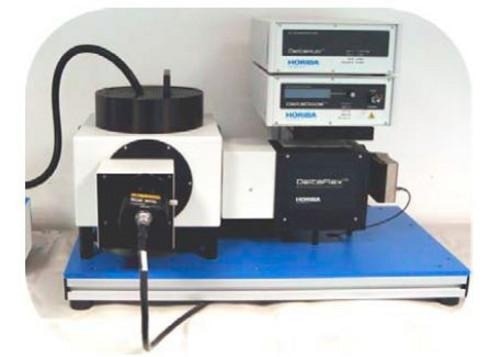
Image Credit: HORIBA Scientific
Rapid mixing accessories to conduct stopped flow measurements have found widespread applications in characterizing interactions and reactions occurring in solution. Expelled from syringes, reactants are mixed and injected into a flowcell.
Measuring PL upconversion spectra and lifetimes of lanthanide-doped nanoparticles

Image Credit: HORIBA Scientific
Upconverting lanthanide-based nanomaterials have a distinct fluorescence anti-Stokes shift, allowing them to convert NIR excitation into visible shorter wavelength emissions (NIR to UV-Vis).
Characterizing lanthanides in glasses for optical applications

Image Credit: HORIBA Scientific
Glasses are crucial materials with numerous applications and forms. There is a growing interest in optoelectronics in the modifying glass composition to facilitate the integration of lanthanide elements.
Upconversion of lanthanide-containing glasses using DD‐980L excitation
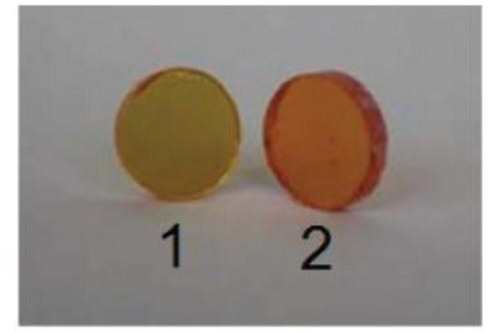
Image Credit: HORIBA Scientific
The phenomenon of upconversion is an optical process in which lower energy (longer wavelength) photons are taken in and higher energy (shorter wavelength) photons are emitted.
Measurement of carrier lifetime in perovskite for solar cell applications
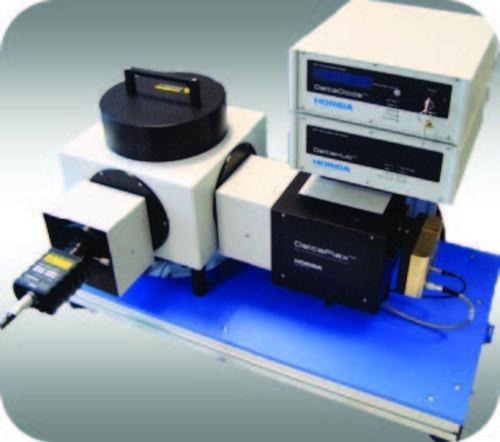
Image Credit: HORIBA Scientific
Hybrid perovskite photovoltaics (PV) show promise due to their high efficiencies of up to 20%. Perovskite materials have a significant degree of radiative recombination in addition to their PV characteristics.
Time‐resolved luminescence of security inks from the UV to NIR

Image Credit: HORIBA Scientific
To combat fraud and counterfeiting of materials and goods, the usage of security measures, such as luminescent inks, has expanded dramatically.
Time‐resolved fluorescence for monitoring food composition
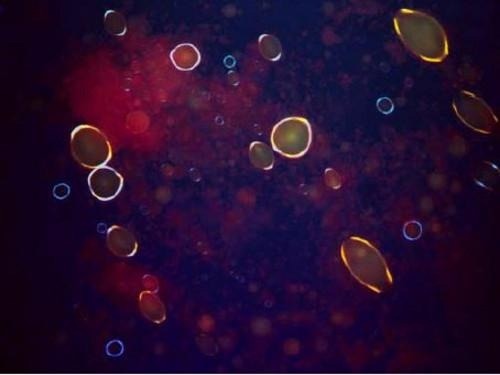
Image Credit: HORIBA Scientific
The application of time-resolved fluorescence has grown in recent years as the relative cost of instrumentation has fallen. This is notably true in the food industry, where time-resolved fluorescence has been used in food characterization as well as aspects linked to food safety and degradation.
Monitoring whole leaf fluorescence using time‐resolved techniques
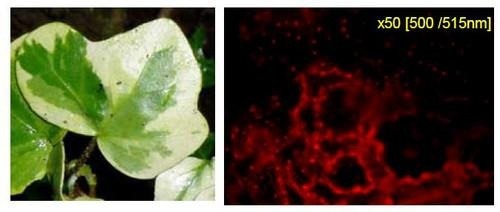
Image Credit: HORIBA Scientific
Light incident on a leaf can be absorbed by chlorophyll to initiate the photosynthetic cycle. Excess energy can be released as heat or fluorescence, which can be used to examine the effectiveness of the photosynthetic process.
The measurement of singlet oxygen lifetime sensitized using rose bengal
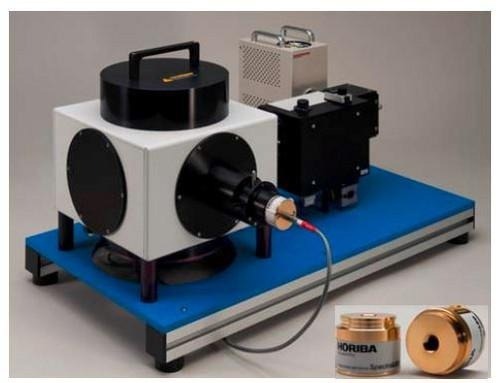
Image Credit: HORIBA Scientific
The research on singlet oxygen (1O2) is of particular interest because it is a highly reactive species. It can be created through the photosensitization of a molecule, such as a dye or porphyrin. As a result of the proper sensitizer selection, the presence of oxygen, and the presence of light, 1O2 can be selectively created. It possesses the biological potential to harm and destroy cells, which has sparked interest in its application as an anticancer drug in photodynamic therapy (PDT).
Effect of temperature on HSA structure inferred using time-resolved room-temperature phosphorescence
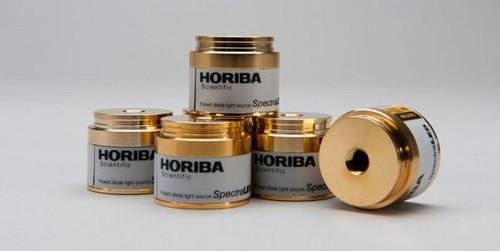
Image Credit: HORIBA Scientific
UV excitation wavelengths for pulsed phosphorescence studies have long been the preserve of low-repetition-rate gas-filled lamps or bigger laser systems to reach intrinsic amino acids, such as tryptophan, as probes. Recent advancements have made interchangeable semiconductor diodes practical.
Investigating photocleavage using time‐resolved emission spectra
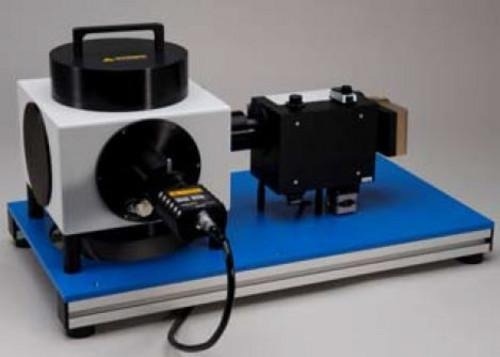
Image Credit: HORIBA Scientific
The choice of safeguarding group is of utmost importance in the achievement of several steps in organic synthesis and the manipulation of polyfunctional molecules, because they can prevent the formation of undesirable side products and reactions.
Elucidating local viscosity using fluorescence lifetime measurements
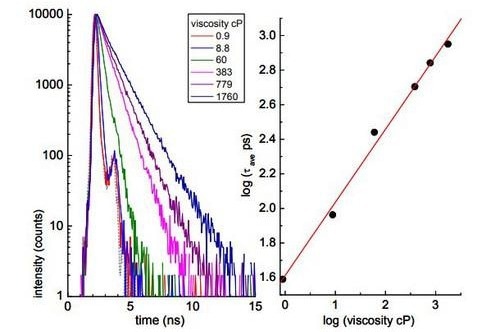
Image Credit: HORIBA Scientific
The fluorescence lifespan of certain fluorescent molecules, known as molecular rotors, can be used to determine the local (nanoscale) viscosity in microheterogeneous systems. This method has the advantage of being simpler and faster to perform than the traditional fluorescence anisotropy method. The HORIBA Scientific TemPro fluorescence lifespan system is used to monitor the gelation of silica produced by the solgel process.
MCS and protein phosphorescence

Image Credit: HORIBA Scientific
Tryptophan phosphorescence inside protein molecules is grabbing attention as a probe of protein dynamics and structure. The lifespan of tryptophan phosphorescence, τ, varies depending on the protein molecule's immediate environment and conformation.